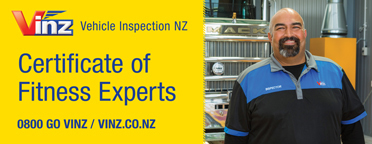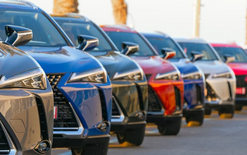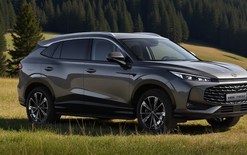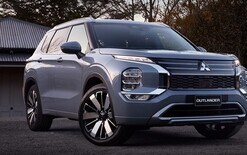Help to switch fleets

While businesses are switching their internal combustion engine (ICE) vehicles to electric cars and hybrids in increasing numbers, research reveals there are challenges when business fleets go green.
An EV fleet guide produced by NZI looks at how companies can overcome challenges faced by early adopters to unlock the technology’s potential.
“We’ve learned a great deal through our EV early-adopter programme and working with clients,” says Garry Taylor, pictured, executive general manager. “Feedback has been positive and we’d like to help other businesses identify benefits of an EV fleet.
“Our research, which has included interviews with fleet managers and commercial drivers, shows more than half expressed concerns about the charge range of EVs, often based on negative stories about early models.
“There are a few common hurdles when businesses are looking at making the switch. Their biggest concerns are usually around charging and range anxiety.
“This is a common concern… but needn’t be the case as technology rapidly improves. Unlike purchasing an EV for personal use when the buyer is typically the driver, there’s also a need with business fleets to engage early on with team members who will use EVs.
“Having conversations with your team early on about the switch is a good way to find out what concerns they may have and give you an opportunity to alleviate them. That will make a big difference to the success of the switch, along with making sure everyone is comfortable with the technology and charging options.”
Whether your EV fleet is charged using public stations, office-based chargers or home-based ones, there are several options with differing costs and challenges so it’s important to work out what works best.
Taylor says: “From research we’ve conducted, anecdotal evidence we’ve heard from our clients, and our own experience as we transition our own fleet, paints a picture of technology that’s already delivering – not only for business, but also the environment.”
NZI’s research confirms the importance of sustainability as a driver for change. Of the fleet drivers it interviewed, 87 per cent said sustainability was important to them and 85 per cent replied it was important to the business. More than seven out of 10 feel more positive towards employers with EVs and or hybrids as part or all their fleet.
Data over instinct
Many businesses are seriously considering – or have begun – transitioning into EVs or hybrids. That said, one of the biggest things NZI has learned is the importance of solid research and objective analysis.
Mike Radford, fleet-risk manager, says before making any decisions ensure you have a robust process in place to decide what vehicles and infrastructure options are best for the tasks at-hand.
“Lots of businesses are keen to jump into EVs and choose vehicles based on anecdotal information. The better approach is to think through your needs and then research options that tick your boxes. That way you choose the right vehicles for your business and drivers.”
Radford recommends thorough research and analysis before deciding on models and numbers to be bought or leased. The place to start? Understanding current usage, such as which vehicles travel the greatest distance, which have low usage that could be better utilised as a pool vehicle or removed from the fleet, and which travel on unsealed roads or go off-road.
One of the best tools for such analysis is GPS data. It’s a powerful means of understanding driver behaviour and how vehicles across a fleet are being used. It is also used to streamline fleet operations and cut costs. Some GPS services even provide a pool-booking system.
Radford says: “Using data gives the business time to share its thinking with staff, hear their feedback and ensure their support for whatever decisions are made.”
Time spent analysing fleet data can provide savings by understanding use. “When businesses fully understand their vehicle usage, they can see opportunities to reduce fleet numbers without sacrificing efficiency or staff satisfaction.”
In addition, a considered approach allows time for staff training and forums where people can get answers to questions around range, charging and other unfamiliar aspects of non-ICEs.
“Don’t leave anyone behind is a powerful mantra,” says Radford. “When you bring your people with you, they’ll be the ones who make the transition succeed.”
One of the most-easily overlooked considerations is charging EVs. Will this be done at work, at employees’ homes with publicly available chargers or with some combination of these? If so, what will the exact mix be? What will installation and any associated works cost?
Formal training needed
Many large organisations switching to EVs or hybrids are turning to formal training to ensure their people can use them confidently and safely.
That trend isn’t universal, however. NZI’s research reveals that just under half of fleet EV drivers receive training yet all who received it reported it as beneficial.
And the vast majority of those still driving ICEs report that if their employer were to switch to EVs or hybrids, they would want training.
Some organisations assume people will happily – and safely – learn by trial and error, says Oliver Jepson, NZI’s national motor manager.
The flaw in this thinking was highlighted in a 2021 report from Waka Kotahi on advanced driver-assistance systems (ADAS) – such as blind-spot monitoring and lane-keep assist – that partially automate key motoring tasks.
“Trust in ADAS technologies is a key determinant of their use,” stated the report, adding that trust is greatest for drivers already them. In other words, “if someone is unfamiliar with the technology, they are less likely to be willing to simply give it a go”, says Jepson.
NZI’s own research supports these findings. In 2022, it commissioned a study of the commercial-driving sector that found a small but significant proportion of drivers regularly disable safety technology, such as traction and stability control, and lane-departure warning.
This is unsurprising given same research found 72 per cent hadn’t received any driver training as part of their employment and 57 per cent of fleet drivers said they received no training from the dealership when taking on a new vehicle.
“Without proper training, people are likely to resist new technology no matter how good it is,” says Jepson. “Businesses must include training in their planning if they hope to succeed.”
Safety first on-site
The number-one rule with an upgrade of existing premises or a new build, says NZI electrical inspector Toby Lancaster, is to ensure the site is designed for safe charging.
He notes risks are still emerging – particularly in New Zealand where the number of EVs is low in comparison with other parts of the world, and there is limited guidance on risk management and best practice.
Nonetheless, good safety practices can still be followed. “That means placing chargers in a safe location and building fire containment into design,” he says.
“Above-ground charging is usually best. If that’s not an option, fire containment sprinklers are recommended. If possible, the surrounding structure should also incorporate fire-retardant materials.”
In addition, chargers should be close to building entrances and easily accessible to emergency services. Smoke detectors are also recommended and flame detectors if chargers are on a rooftop.
International best practice covers off linking devices to cut off power to chargers should they be triggered. Recommended measures include:
• Place charging equipment on a raised island with barriers to protect against impact damage.
• Keep vehicle-charging bays generously spaced.
• Provide fire-rated separation between bays if possible. Concrete and brick walls are ideal, otherwise, fire-rated material.
• Avoid placing chargers on or near a floor slope where a fuel spill could exacerbate a fire. If that’s unavoidable, ensure adequate drainage exists to deal with any spill.
• Create a site plan for emergency services to enable them quick access to the site and firefighting facilities if needed.
• Only have qualified technicians install charging equipment. Ensure they install chargers in strict compliance with manufacturers’ recommendations.
• Ensure chargers are maintained according to manufacturers’ recommendations.
• Provide residual-current device protection, and ensure it will activate for AC and DC fault currents. And don’t overlook the proper maintenance of chargers.
Guide to going electric
NZI’s EV fleet guide is aimed at businesses considering adding electric models to their commercial fleet, and if it’s the right move for their companies and people.
It covers the benefits of EVs and hybrids, key considerations and challenges, team training and charging infrastructure options. Click here to download the guide.
In contains the top six reasons why companies are prioritising sustainability, which provides some food for thought. These are:
• Improving operational efficiency and lowering costs – 42 per cent.
• Desire for my business to have a sustainable recovery from the Covid-19 pandemic – 41 per cent.
• To improve access to capital and investment – 37 per cent.
• Political prioritisation of sustainability and corporate responsibility – 33 per cent.
• Concerns around attracting, motivating and retaining employees – 33 per cent.
• Increase in regulation and non-financial reporting requirements – 32 per cent.





